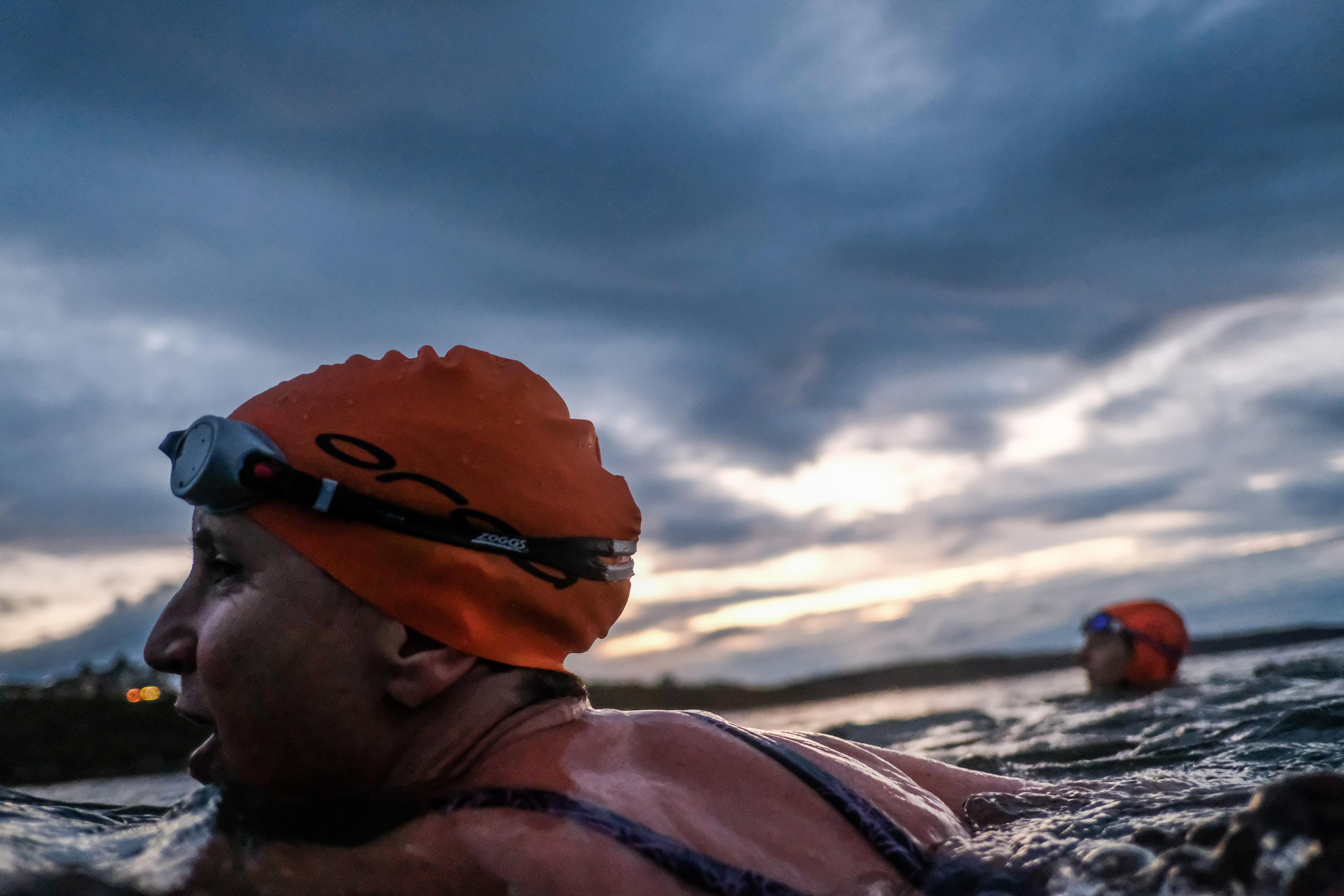Not so long ago, breathing teachers weren’t easy to find. Locating an instructor required venturing into niche, New Age spaces where gurus would lead people through ‘holotropic breathwork’ or advanced yoga techniques. Now, professional breathers seem to be everywhere, especially on social media. Appearing in bamboo forests or near freezing rivers, these ‘breathfluencers’ make big promises, claiming that intentional breathing grants access to the ‘control panel’ of the body and mind, which modulates the immune system, releases tension, improves focus, balances emotions, heals trauma and awakens our inner vitality. According to Wim Hof, one of the world’s best-known breathing teachers, learning to intentionally inhale and exhale can allow us to ‘control the life force’ and make us ‘the alchemist of life itself’. But what do such claims really mean, and is there any truth to them?
Studies show that breathing is powerful. It is connected to fundamental features of consciousness such as memory, the experience of fear, pain, and even the perception of time. Researchers have described the brain’s breathing centre as a traffic-control hub that broadcasts signals through the body and mind. Beneath awareness, breathing works with precision, subtly mediating how the body and world talk to one another. These positive effects occur whenever we breathe. It’s understandable, then, why breathwork teachers have claimed that these beneficial effects can be elevated using hyperventilation or other breathing techniques. But, as research has shown since the late 1800s, these techniques can sometimes be dangerous.
At first, this may seem counterintuitive. We are already breathing all day long. Surely doing it a little differently wouldn’t cause any harm? However, when that difference involves breathing in and out much more quickly and deeply than normal, as in many hyperventilation techniques – such as those used in holotropic breathing, some schools of yoga, or the ‘Wim Hof Method’ – it’s a different story. And when these techniques are combined with water immersion, intentional breathing can become a recipe for death.
I’m a researcher who studies the relationship between breathing and culture, and what I have learned has taught me to be cautious of the big, confident promises of breathwork. As with any powerful practice or medicine, intentional breathing has real effects, but it is neither a panacea nor harmless.
Perhaps I’m biased. I was raised to be sceptical of certain breathing practices. ‘You can do any kind of yoga except kundalini yoga,’ my mother told me when I was young. kundalini yoga, she explained, includes techniques such as the ‘breath of fire’, which involves rapid exhalations. Her concern was based mostly on anecdotal evidence. A friend she once lived with had done ‘too much of that “breath of fire” exercise,’ she said, and then ‘went nuts and moved into the closet.’
Her warning was poorly timed. As a 10-year-old in the late 1980s, I wasn’t interested in yoga – nor were most people. Health-seekers typically did aerobics. Exercise programmes, like Richard Simmons’s Sweatin’ to the Oldies (1988-2010) or Jane Fonda’s Workout (1982-95), were not pitched as a way to access the ‘control panel’ of your nervous system or to ‘control the life force’. Much later, when I started researching the history of breathing in 2010, I was reminded of my mother’s warning. While digging around in dusty archives, excavating forgotten breathing theories and experiments, I was surprised to find many discussions of overbreathing and hyperventilation that went back to the 1860s. The fascinating – and sometimes dangerous and bizarre – entanglements of body, mind and breathing had been open questions for a long time.
While researching late one night in 2012, I followed a link to a video showing a group of men running barefoot through mounds of snow in Poland. Their run culminated with a group cheer as they immersed themselves in an icy river at the foot of a waterfall. Their coach, a man named Wim Hof, was pairing cold exposure in snow and icy water with a technique that looked a lot like the breath of fire, with deep inhalations and exhalations through the mouth.
There have been many reports of death or injury associated with breathwork in or around water
Today, Hof has become an iconic figure, central to the rise of breathwork – even the term ‘breathwork’ has become synonymous with some version of the breathing practice he has popularised. But in the early 2010s, Hof didn’t yet have this popularity, or wealth. Back then, when he wasn’t running marathons across frozen tundra or giving himself enemas using the fountains in a public park, he was a truck driver.
My research continued as Hof’s breathing techniques became more and more popular. These techniques were known to cause physiological stress. The right kinds of stress – like icy water – could, under certain circumstances, be healing and beneficial. However, as I was learning, this was only half the story. What worried me was the long history of research showing that overbreathing could be dangerous or even deadly when paired with water immersion by creating the conditions for shallow-water blackout, sometimes called underwater hypoxic blackout.
In 2016, Luuk Dullaert, 33, died during a session of Wim Hof-style breathwork in his apartment’s swimming pool. In 2017, Aaron Pappas, 43, died after practising breathwork in a community bathhouse. In 2022, Madelyn Rose Metzger, 17, died in her family’s backyard pool while trying to calm herself with breathwork. In 2023, Nova Xavier, 23, died while practising Hof-style breathing in the pool at his grandmother’s gated community. There have been close calls, too. The former chess prodigy Josh Waitzkin, 48, has spoken about how he ‘blacked out in a bliss state’ while performing breathwork in a pool around 10 years ago, reportedly surviving for four minutes underwater before being hauled out and revived.
There have been many other reports of death or injury associated with people who have practised breathwork in or around water, but we can only guess at the true number who have died or been harmed. Breathwork teachers are aware of such risks. For example, Hof and his team have acknowledged the dangers of shallow-water blackout. One training video for beginners warns that breathing exercises shouldn’t be performed before or during immersion in water. However, two of the three ‘pillars’ of the Wim Hof Method are breathing and cold exposure (often in ice baths), so it’s easy to understand why some people are tempted to use breathing techniques to make long breath-holds in water. What the warnings often fail to acknowledge is that intentional breathing techniques set up a specific physiological situation, beyond simply fainting, in which death by drowning is possible. The risk emerges because breathing too much, paradoxically, does not get more oxygen to the body, brain and tissues. It does exactly the opposite.
Beginning in the 1860s, traumatised veterans of the American Civil War were making physicians curious about the psychophysiology of hyperventilation. These sick soldiers walked slowly but breathed heavily, which sometimes led to frightening seizure-like waves of involuntary muscle contractions, accompanied by sweating, elation, hallucinations, spasms and tremors. The strange neurological effects of overbreathing were so predictable that some neurologists later used hyperventilation as an experimental technique to generate symptoms in order to study them. Throughout the 20th century, studies of ‘hyperventilation syndrome’ and ‘hysterical hyperventilation’ began to emerge. Some researchers proposed that living in a state of subtle but chronic hyperventilation for extended periods was the root cause of many different forms of mental and physical illness, especially anxiety.
Too much breathing is like letting a thief inside your home to disable the alarm system
Hyperventilation caused another strange effect that baffled researchers. In some cases, a hyperventilating person would temporarily lose the desire or impulse to breathe. A scholar at Oxford University demonstrated the effect to horrified members of the Physiological Society at a meeting held around 1908. First, he performed what might look to us like a long session of Hof-style overbreathing. He then effortlessly held his breath until he became ‘blue in the face and present[ed] a most alarming appearance, though he [felt] no desire to breathe’. Some observers fled the room ‘faint or sick’ while others prepared to resuscitate him once his face took on a ‘leaden, corpse-like appearance’. We don’t know exactly what happened next. It’s unlikely but not entirely impossible that the scholar did, in fact, require resuscitation. In the face of such experiments, researchers began to wonder: how could this effect so easily override the impulse to breathe? How could it lead someone to the precipice of death?
One answer was carbon dioxide: the key that unlocks the release of oxygen to tissues and serves as an important breathing trigger. As the physiologist Friedrich Miescher explained in 1885: ‘Over the oxygen supply of the body, carbon dioxide spreads its protective wings.’ Too much breathing is like letting a thief inside your home to disable the alarm system. Large inhalations and exhalations blow off precious carbon dioxide, making it hard or impossible for the body to use oxygen, while meddling with the very drive to breathe itself. It is debatable – and in my opinion doubtful – that the careful application of such ‘stress’ is health-promoting on land. But in water, there’s no debate: breathing too much is dangerous.
In Hof’s method, there’s the additional matter of cold, which can intensify such dangerous effects by negatively impacting the heart. Mike Tipton, a veteran physiologist specialising in the body’s response to cold water, told The Times that the synergistic effect of hyperventilation and cold exposure is ‘an incredible way’ of causing arrhythmia (an abnormal or irregular heart rhythm) in healthy people. There’s something deathly about this pursuit of wellness: ‘The strange thing about hypothermia,’ Hof writes in his book The Wim Hof Method: Activate Your Full Human Potential (2020), ‘is that you don’t want to wake up; you just want to go to sleep … I felt rosy. You go to sleep, and that’s it. Thank you very much, goodbye life. It’s okay. No worries. No fears. No nothing. Just a nice, rosy feeling.’
By the 2020s, Hof had become a celebrity breathing guru, promoted by Jim Carrey, Kendall Jenner, Ellen DeGeneres, Justin Bieber, Harrison Ford, Oprah Winfrey, Jack Dorsey and others. On YouTube, Hof guides people through long breath-holds after rounds of hyperventilating: ‘Deep peace,’ he says. ‘No need for breathing. Just witness. You are deep into the physiology of your being … And now the adrenal axis is shooting out … Any defect is being neutralised.’ He says this is a ‘true science’, and that ‘makes it trustworthy’.
Hof doesn’t sweat the details. Through a salad of scientific words – serotonin, biochemistry, adrenal axis, dopamine, nervous system – he claims that his breathing technique can grant exquisite control over the body and mind. ‘Yeah, breathe, motherfuckers!’ he says. ‘Don’t think, just do it!’
With so many teachers telling us how to breathe, it’s good to remember that breathing is an intimate reflection of your own body, mind, metabolism and emotional state. A 1940 study made the tantalising suggestion that a person’s breathing pattern – captured using a machine that recorded changes in the position of the chest, a research technique that was in vogue at the time – is as unique as a fingerprint. To my knowledge, this was never proven. But if breathing is as central to our bodies and minds as scientists (and breathworkers) suggest, we might want to become more curious about our own breathing, just as it is, before confidently trying to change it with a new technique – especially when that technique is taught by someone who stands to gain by promoting a one-size-fits-all approach. Paying attention to your own form of breathing is the safest way to respect the tight synergy between breath and all that it governs in the body. If you want to maximise the benefits, you might start by thinking about how simple, calming practices such as box breathing or timed breathing could be tailored for you based on an understanding of your habitual breathing patterns. Likewise, an understanding of your own breathing might lead you to take up gentle breathing practices intended to reflect the way you want to breathe on a regular basis. Such practices might help you dial physiological stress down rather than up.
Your breath is uniquely yours. It’s an evolving relationship between your inner world and the world around you – one that thrives on curiosity and openness. If you feel benefits from controlling your breathing, remember that hyperventilating may produce compelling effects but it is not always healthy or safe. It is certainly not a method for becoming an ‘alchemist of life itself’.
And, please, if you are going to chase the promises of breathwork influencers, do your heavy breathing safely on dry land.








